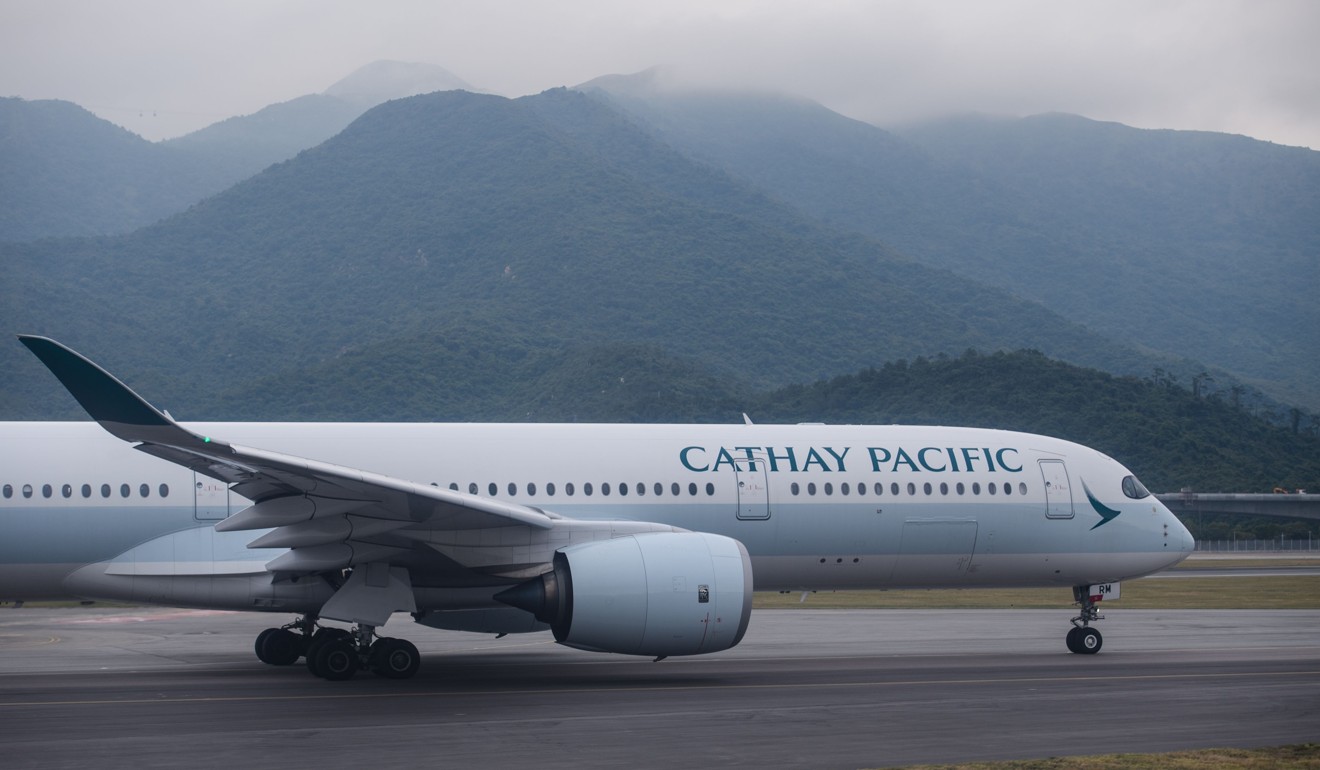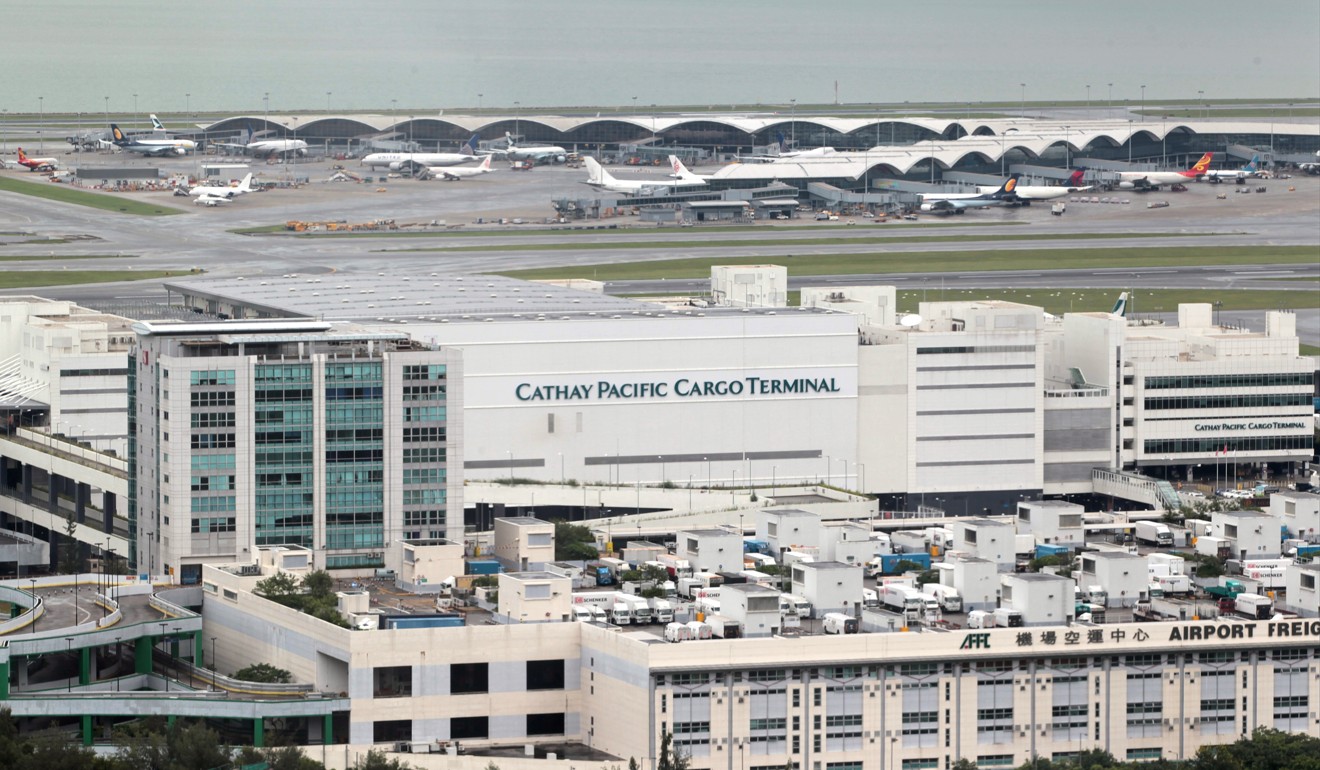
Hong Kong’s Cathay Pacific banks on cargo to bring in the cash as 2017 losses forecast at US$357 million
Investment in freight business could pay off as global economy gathers strength

A strong cargo business will be one of the few bright spots for Cathay Pacific Airways when it unveils losses estimated at HK$2.8 billion (US$357 million) on Wednesday on the back of its weak passenger operations.
Hong Kong’s biggest airline has carried more freight at higher prices and added more cargo flights in the past year. The expansion came as earnings from air tickets declined as the company slashed prices to keep pace with budget competition.
“We have not seen such a strong air cargo market since 2010, and as the second largest cargo airline in the world, Cathay Pacific is one of the biggest beneficiaries,” said Corrine Png, chief executive of transport research firm Crucial Perspective.
“Cathay’s continued investment in its cargo business in recent years, while most Asian airlines downsized, is paying off.”

The airline has doubled down on its investment in freight as a recovery in global trade boosts business. It began renting two extra Boeing 747-8 planes last summer to bolster its 20-strong cargo fleet. And late last year it took full control of its Air Hong Kong freighter unit which it had previously partnered in with global logistics firm DHL.
Meanwhile, competitive pressures from mainland Chinese competition and budget carriers have grown. These have come as Cathay’s financial troubles deepen. The airline recorded a HK$2.05 billion deficit in the first half of 2017, placing it on course for its first back-to-back losses in its 71-year history after it shed HK$575 million in 2016.
The firm is expected to unveil its latest full-year results on Wednesday. Two analysts the Post spoke to forecast a loss of HK$2.8 billion.
Cathay is set to join Thai Airways and Garuda Indonesia as one of a handful of publicly traded airlines in the Asia-Pacific region to lose money this year, as rivals from mainland China, India, Australia and beyond perform strongly.

Analysts had forecast last year to be the worst for Cathay as it executed a major restructuring of the business which has so far led to 600 job losses. The changes were supposed to save HK$4 billion.
Paul Yong, vice-president of equity research at DBS Bank, said: “The bright spots would be from the cargo business and the contribution from associates like Air China. But we do expect the core business to show a loss. The market will want to see a clearer sign of that turning around.”
Bad bets on fuel hedging, which have been a major factor pushing Cathay into the red, will continue to hurt the airline, Yong said.
And beyond the large losses, market watchers will be closely monitoring whether passenger yield – a measure of how much passengers pay for a ticket – has stopped declining.
Running costs will be scrutinised as a gauge of how the restructuring is going, and of how the exercise is likely to translate into 2018 and 2019 earnings.
“The industry sentiment is pretty good. People expect 2017 to have been the weak year and a recovery to emerge going forward,” transport analyst Kelvin Lau, from Daiwa Capital Markets, said. “The future depends most importantly on guidance. Most people have high expectations for a recovery in 2018.”
Shares in Cathay have risen 10 per cent in the year to date. Yong said that was a reflection of a more positive macroeconomic outlook for the global economy, which Cathay stands to benefit from as corporations fill business-class seats and send more cargo.
The share price rise still trails those of mainland competitors, however, which have seen gains of up to 25 per cent.
Staff costs are expected to fall after the restructuring. More cuts are likely on top of the 600 staff already axed, as overseas roles are reviewed.
But one of the biggest potential cost savings has yet to be realised – that from pilot pay and benefits. Efforts to adjust salaries and perks stalled last year, leaving management and unions at an impasse, but talks may restart by next month following a six-month pause.
The airline hopes savings from air crew costs will amount to 25 per cent of overall cost reductions in the restructuring process. But Cathay has faced discontent among cabin crew at its Asia-focused Cathay Dragon unit. The staff union last week demanded a 4 per cent pay hike.
Cathay Pacific and sister airline Cathay Dragon operate 175 passenger aircraft and 20 freight planes to almost 200 destinations in 49 countries and territories. They carried 34.8 million travellers last year. Air Hong Kong has a fleet of 13 aircraft flying to 13 cities.